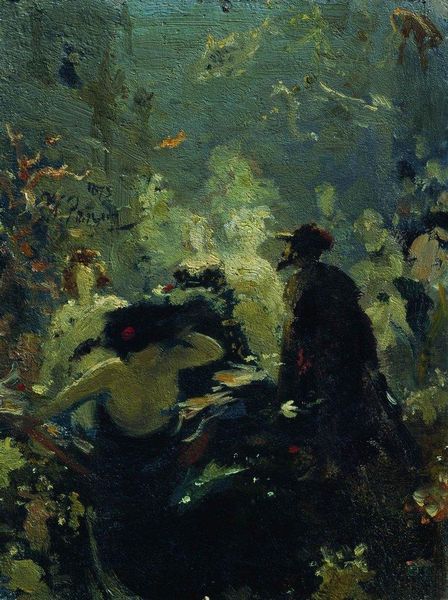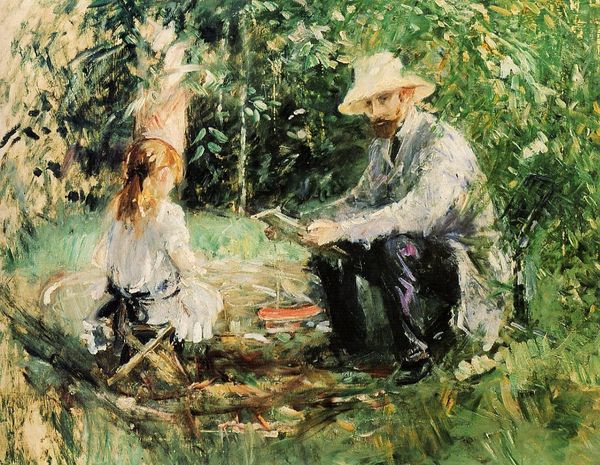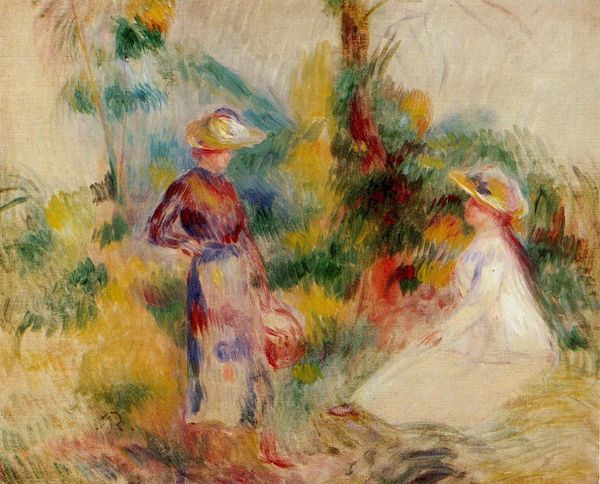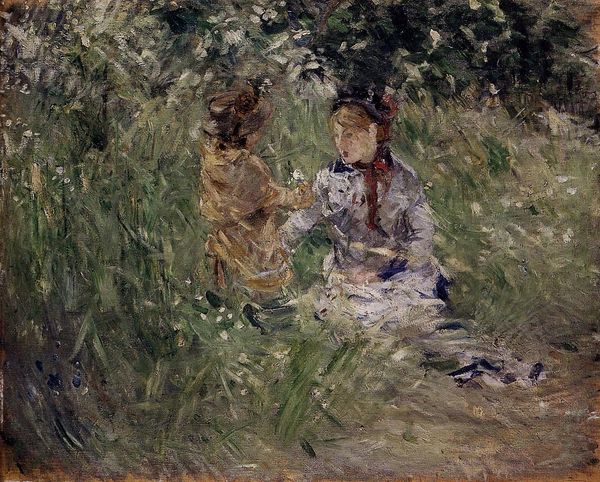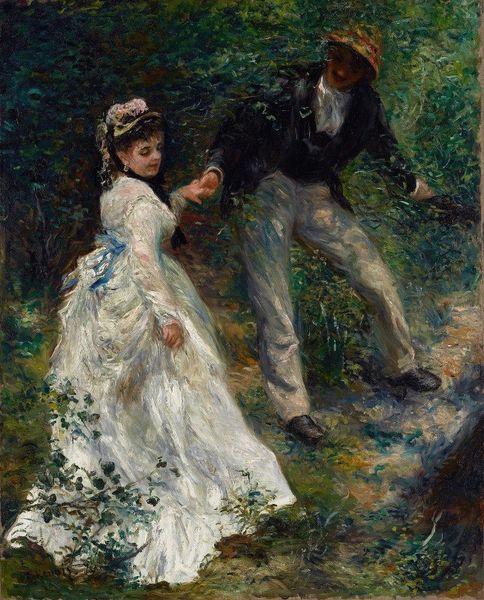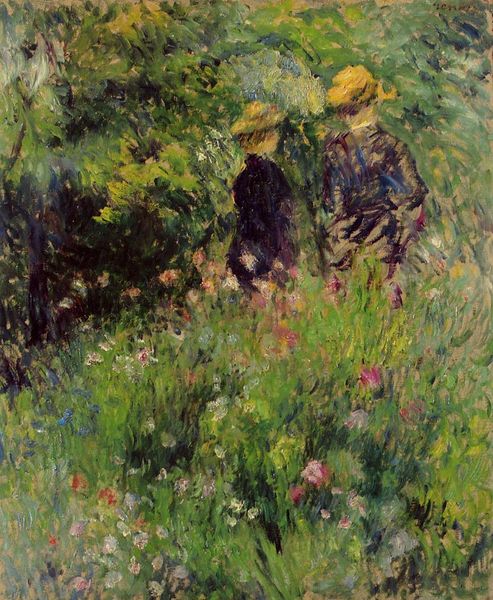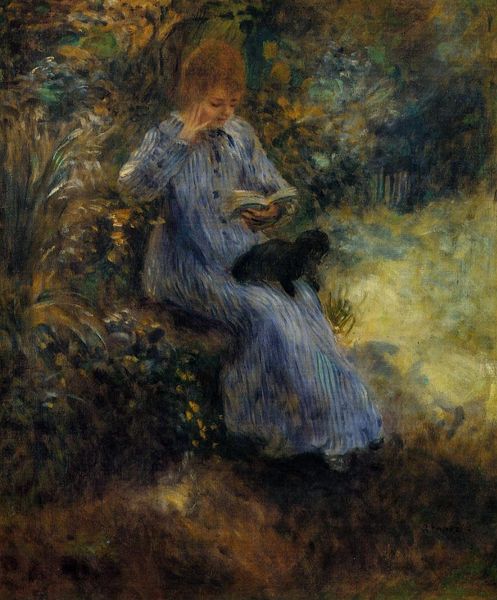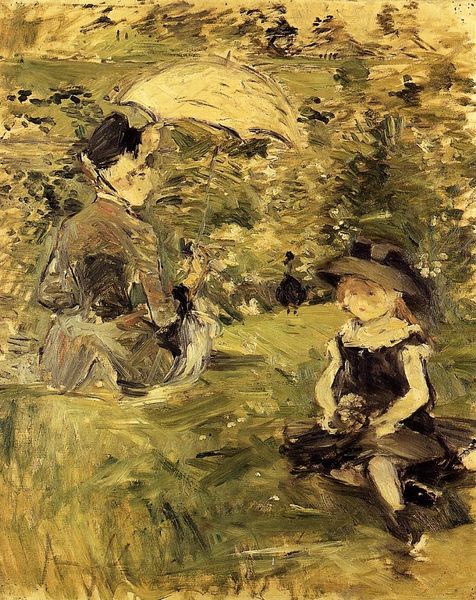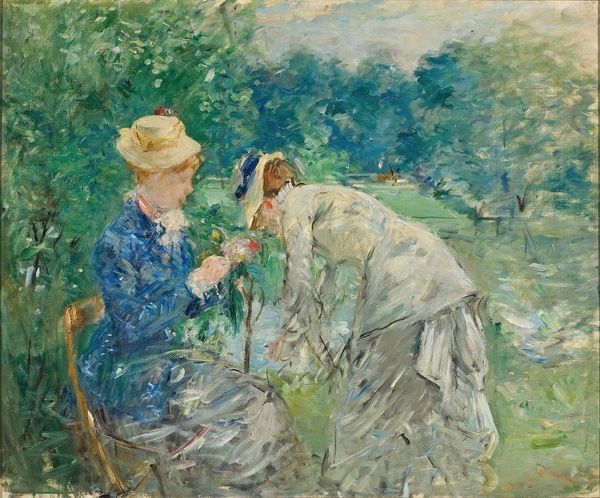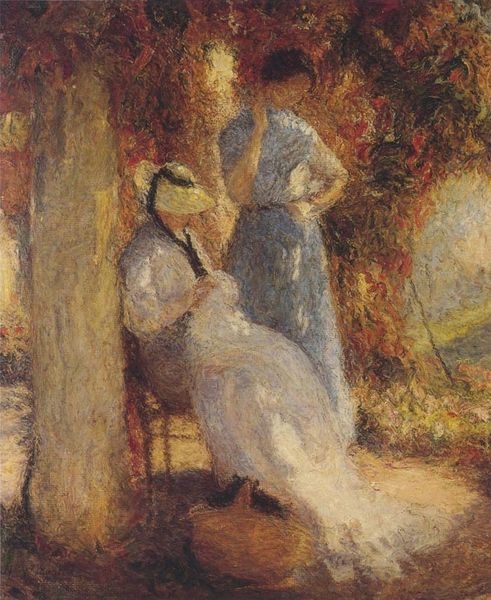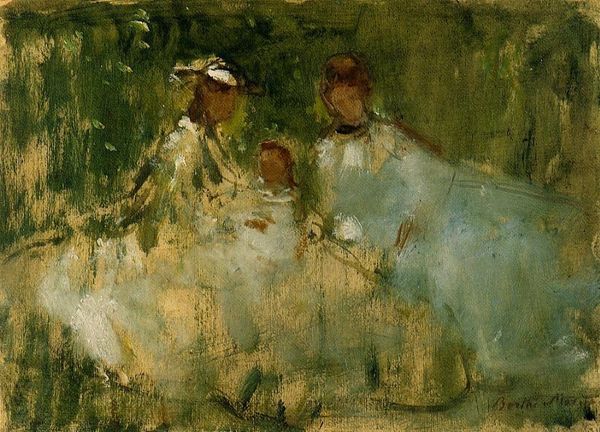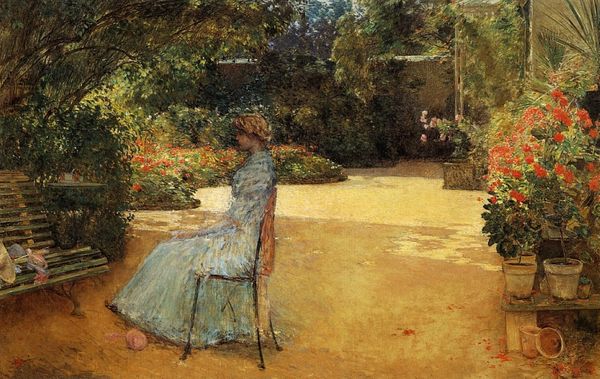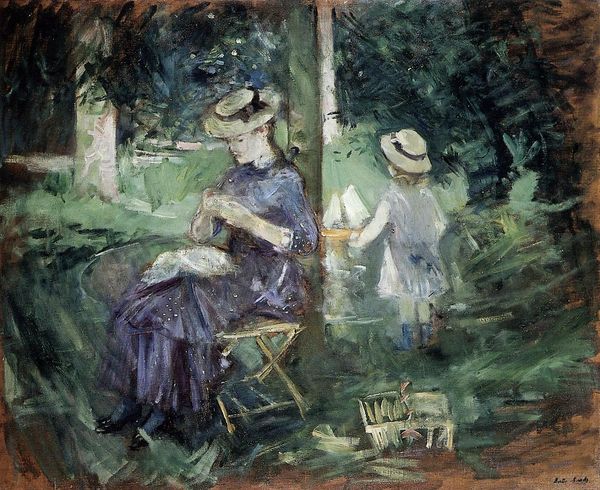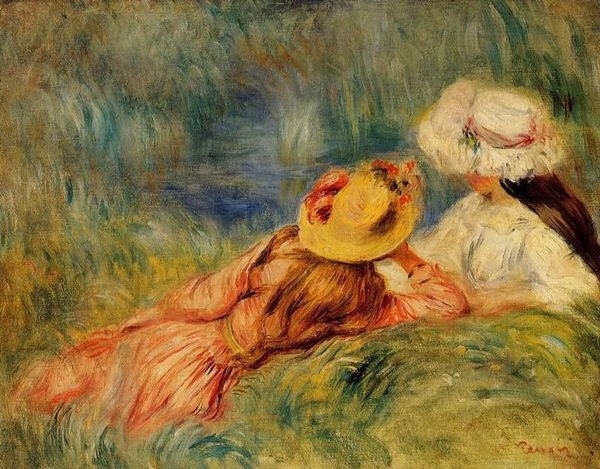
Copyright: Public domain
Curator: Pierre-Auguste Renoir’s "The Fisherman," painted in 1874, offers a glimpse into leisure activities of the French bourgeoisie during the Impressionist era. What is your first reaction? Editor: It feels strangely…muted. The brushstrokes give the scene movement, yes, but there's an underlying stillness, a kind of melancholy even. It makes me wonder about the context – what societal norms are at play here? Curator: The painting appears to be created en plein air with the natural light emphasizing its stylistic form; one sees broad applications of oil paint, applied with a looseness intended to catch fleeting impressions. Editor: Right. And note how the figures are positioned in the composition, though. He's standing, actively engaged in what appears to be a traditionally male pursuit while she's seated, passively watching. What does that say about the expectations placed on women? What narrative does Renoir perpetuate about societal class? Curator: Consider, too, that Renoir frequently depicted scenes of everyday life. The materiality of the fishing rod, his clothes, and even her dress indicates social position. Fishing becomes more than a pastime; it becomes a display of status. The quality of these materials reflects their position. Editor: And look at her dress - voluminous and impractical. Trapped by her clothing and circumstance, Renoir is portraying the quiet constraint experienced by the woman in this painting. Her inaction speaks volumes about a life predetermined by circumstance and material restriction. Is that romantic, or restrictive? Curator: Perhaps it's both. Renoir utilizes modern painting techniques, combined with imagery of leisure activities among the wealthy. How does art serve these individuals, how does it reify those experiences? This interplay, though beautiful on the surface, serves to affirm power dynamics of the day. Editor: It does highlight a tension - this surface of idyllic pleasure resting on a foundation of social disparity. So, we’re left grappling with this painting’s relationship with both art history and with social commentary. Curator: Exactly, an echo still resounding through debates about labor, representation, and value.
Comments
No comments
Be the first to comment and join the conversation on the ultimate creative platform.
